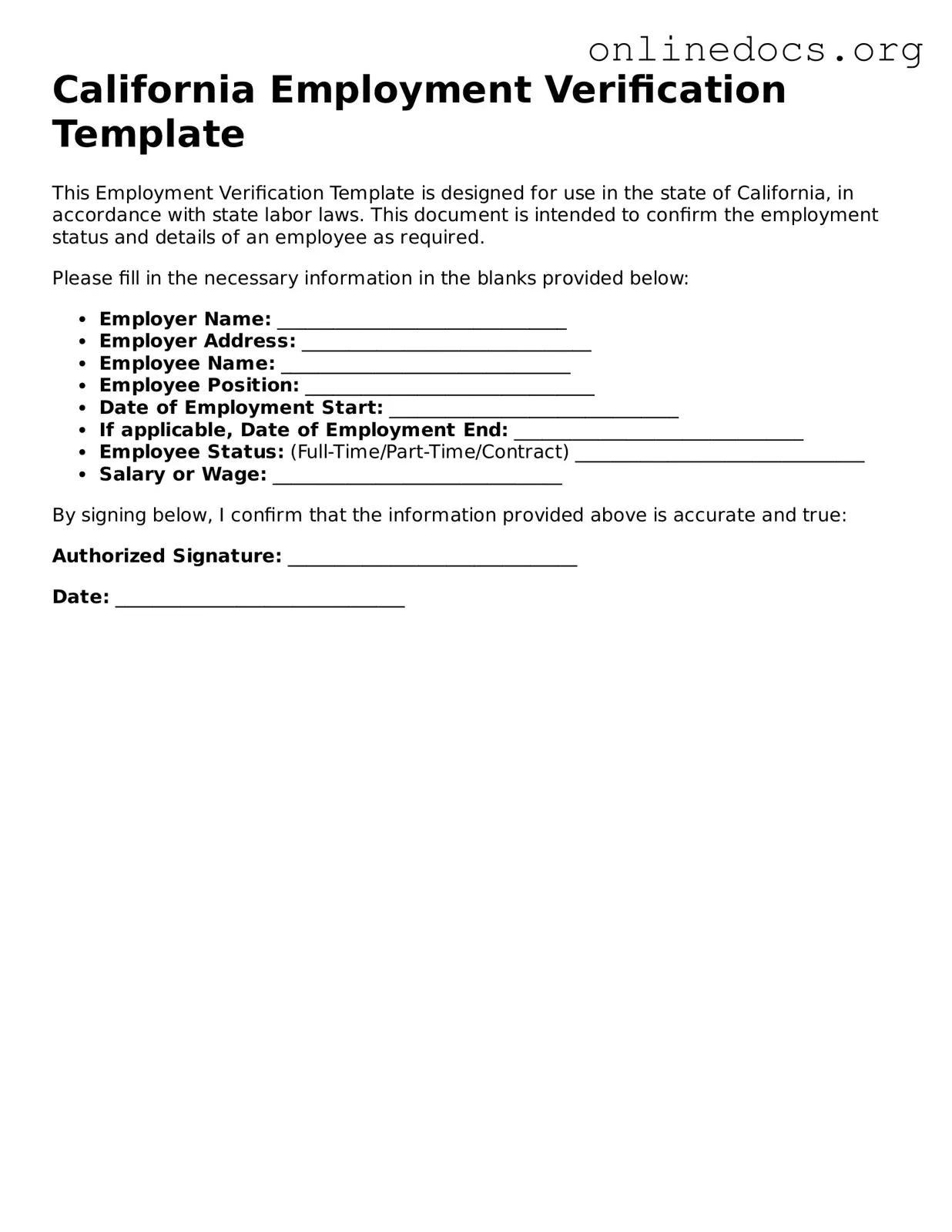The I-9 form, officially known as the Employment Eligibility Verification form, is a crucial document used in the United States to verify an employee's identity and authorization to work. Like the California Employment Verification form, the I-9 requires both the employee and employer to provide information about the employee’s identity. This includes presenting specific forms of identification, which can be either a single document that establishes both identity and employment authorization or a combination of documents. Both forms aim to prevent unauthorized employment and ensure compliance with federal regulations.
The W-4 form, or Employee's Withholding Certificate, is another important document that serves a different purpose. While the California Employment Verification form focuses on confirming employment status, the W-4 determines the amount of federal income tax to withhold from an employee's paycheck. Employees fill out the W-4 to indicate their filing status and any additional deductions or allowances they wish to claim. Both documents are essential for maintaining accurate employment records, but they serve distinct roles in the employment process.
The pay stub, or paycheck, provides a summary of an employee's earnings and deductions for a specific pay period. Similar to the California Employment Verification form, it serves as an official record of employment. While the verification form confirms that an individual is employed, the pay stub details the financial aspects of that employment, including gross pay, net pay, and withholdings. Both documents are important for employees to understand their employment status and financial situation.
The offer letter outlines the terms of employment and serves as a formal job offer from the employer to the prospective employee. This document, like the California Employment Verification form, is part of the onboarding process. It typically includes details such as job title, salary, and benefits. Both documents are essential for establishing the employment relationship and ensuring that both parties have a clear understanding of the terms involved.
The employment contract is a more detailed document that outlines the rights and responsibilities of both the employee and employer. Similar to the California Employment Verification form, it serves as a formal agreement that can be referenced throughout the employment relationship. While the verification form confirms that an individual is employed, the employment contract specifies the terms of that employment, including duration, duties, and compensation. Both documents play a role in defining the employment relationship.
When considering the management of your affairs, utilizing a reliable power of attorney template can provide clarity and peace of mind. This document ensures that your preferences are honored, especially in circumstances where you may not be able to voice your needs directly. It is essential to choose a trustworthy individual to act on your behalf, ensuring that your decisions are handled appropriately.
The background check authorization form allows employers to conduct a background check on potential employees. This document is similar to the California Employment Verification form in that it is part of the pre-employment process. Both forms are used to gather information about an individual’s qualifications and suitability for a position. While the verification form confirms employment status, the background check authorization focuses on the employee's history and character.
The benefits enrollment form is used by employees to enroll in various company-sponsored benefits, such as health insurance or retirement plans. Like the California Employment Verification form, it is an essential part of the employment process. Both documents require employees to provide personal information, but the benefits enrollment form focuses on the employee’s choices regarding benefits. Both forms contribute to the overall employment record and help ensure that employees receive the appropriate benefits.
